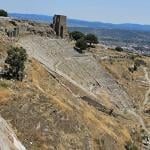New Common Core standards (which impact 46 out of 50 states) will require that, by graduation in 2014, 70 percent of books studied be nonfiction. Some suggested texts include “FedViews” by the Federal Reserve Bank of San Francisco, the EPA’s “Recommended Levels of Insulation,” and “Invasive Plant Inventory” by California’s Invasive Plant Council. . . .
I like reading. I love reading. I always have. I read recreationally still. I read on buses, in planes, while crossing streets. My entire apartment is covered in books. And now, through some strange concatenation of circumstances, I write for a living.
And it’s all because, as a child, my parents took the time to read me “Recommended Levels of Insulation.”
Oh, “Recommended Levels of Insulation.” That was always my favorite, although “Invasive Plant Inventory” was a close second. (What phrases in literature or life will ever top the rich resonance of that opening line? “The Inventory categorizes plants as High, Moderate, or Limited, reflecting the level of each species’ negative ecological impact in California.”) . . . .
“It is important to note that even Limited species are invasive and should be of concern to land managers,” I frequently tell myself, in moments of crisis. “Although the impact of each plant varies regionally, its rating represents cumulative impacts statewide.” How true that is, even today. Those words have brought me through moments of joy and moments of sorrow. They are graven on my heart. I bound them as a seal on my hand.
My dog-eared, beaten copy of “Recommended Levels of Insulation” still sits on my desk. I even got it autographed. Their delay in making a movie of this classic astounds me. That was where I first learned the magic of literature.
“Insulation level are specified by R-Value. R-Value is a measure of insulation’s ability to resist heat traveling through it.” What authority in that sentence!
And then came the table of insulation values. I shudder every time that table appears. It is one of the great villains in the history of the English language. Uriah Heep and Captain Ahab have absolutely nothing on it. In fact, I do not know who these people are. I have never read about them.”
Petri goes on like this for awhile, but then she drops the sarcasm:
This increased emphasis on nonfiction would not be a concern if the core worked the way it was supposed to, with teachers in other disciplines like math and science assigning the hard technical texts that went along with their subjects. But teachers worry that this will not happen. Principals seem to be having trouble comprehending the requirement themselves. Besides, the other teachers are too busy, well, teaching their subjects to inflict technical manuals on their students too, and they may expect the English department to pick up the slack. And hence the great Purge of Literature.
These are good intentions, but it will be vital to make sure the execution is as good, or we will head down the road usually paved with good intentions. There, in the ninth circle, students who would otherwise have been tearing through Milton and Shakespeare with great excitement are forced to come home lugging manuals of Exotic Plants.
All in all, this is a great way to make the kids who like reading hate reading.
via The Common Core’s 70 percent nonfiction standards and the end of reading?.












